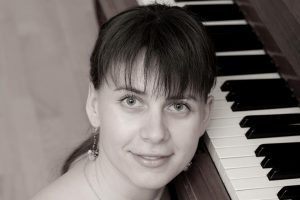Parallels Between the Songs by Henry Purcell and Benjamin Britten
Doctoral student: Giedrė Muralytė-Eriksonė
Supervisors: Prof. Irena Uss-Armonienė, Assoc. Prof. Dr. Laima Budzinauskienė
Department: Accompanying Piano
Intended duration: 2017–2018
(artistic doctorate studies for art licentiates)
Abstract
The composers Henry Purcell (1659–1695) and Benjamin Britten (1913–1976) were the main figures in English musical culture, like a bridge between baroque and the 20th century: Britten had an idea to refresh English music and literature, to show the beauty, freedom and vividness of English language.
The present artistic research paper will analyse and show the correlation between Britten’s realizations of Purcell’s songs and the input in the original vocal music (vocal cycles) by Britten.
Britten was one of the few 20th-century composers who regarded melody as the most important element in music. He started to realize Purcell’s songs since 1943 and it had a huge impact on his original musical language as he was inspired by Purcell’s musical language, which made use of texts in an expressive and free manner. The identified patterns will be used to explain the linkages between the musical and the poetic text in Britten’s realizations of several Purcell’s songs. Britten’s realizations of Purcell’s songs were eccentric and expressive; arrangements were experimental and like improvisations, filled with strong notes diatonically and chromatically.
The echoes of Purcell’s melismas could be clearly traced not only in Britten’s realizations of Purcell’s songs but even in Britten’s original vocal pieces including song cycle “Winter Words” Op. 52 (1953). By comparing Britten’s realizations of several Purcell’s songs from the period preceding the composition of “Winter Words” with the songs from the cycle analysed it has been shown that “Winter Words” were directly inspired by the musical language of Purcell, especially the experimental aspects of Britten’s musical language such as the invention of a lively figuration. The use of melismas and appropriate textures has been drawn from the musical legacy of Purcell.
Britten was particularly inspired by Purcell’s illustrative approach to putting together music and text, thus creating fascinating linkages across different historical and musical contexts. Methodologically, the analysis will adopt the perspective of cyclicity based on Rudolph Réti’s theory of microtopicality by explaining an organic cohesion between architectonics of composition and the parts of a vocalist and a pianist. The harmonious language of songs, and different thematic motives and their relationship with a poetic text will be considered.
To make a deeper cohesion between the research paper and the artistic part of the project, the original songs by Purcell, Britten’s Purcell realizations as well as original vocal cycles by Britten will be analysed and performed.


